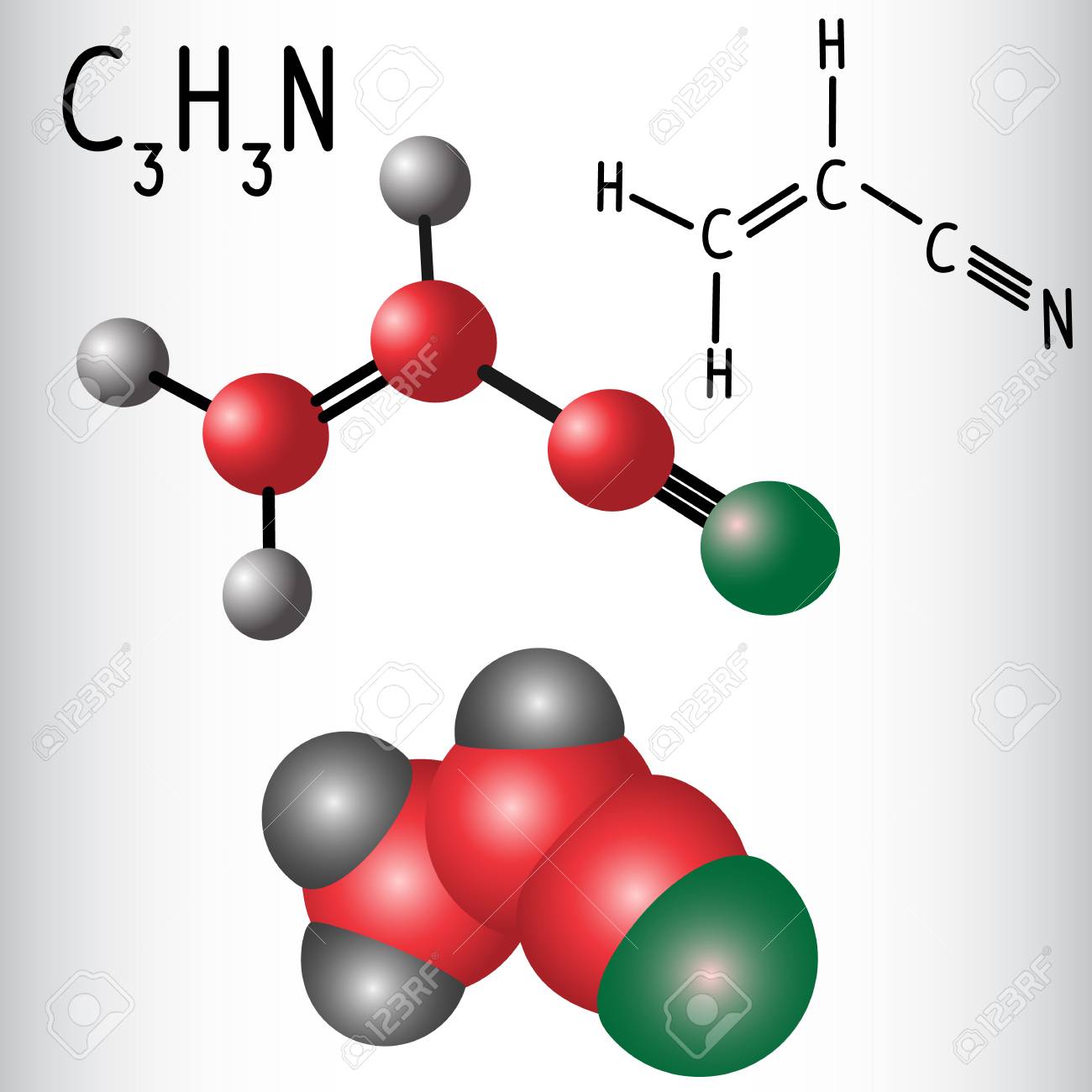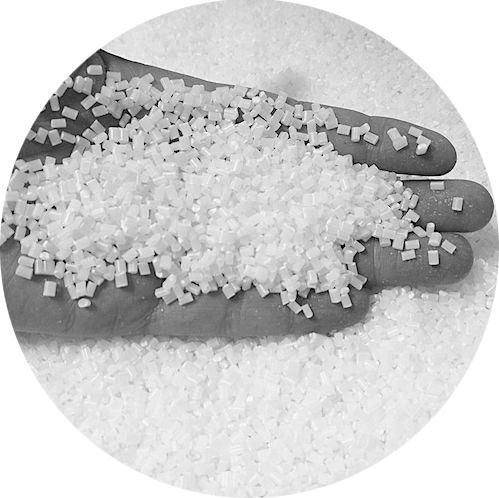

What is Acrylonitrile?
Acrylonitrile (acrylan, vinyl cyanide) is a, toxic, colorless to pale yellow, liquid, man-made chemical with a sharp, onion or garlic-like odor.
Acrylonitrile is used mostly to make plastics, acrylic fibers, and synthetic rubber and in the past as a pesticide.
Because acrylonitrile evaporates quickly, it is most likely to be found in the air around chemical plants where it is made.
Acrylonitrile breaks down quickly in the air. It has been found in small amounts in the water and soil near manufacturing plants and hazardous waste sites
This substance, is harmful to the eyes, skin, lungs, and nervous system, it may cause cancer.
Workers may be harmed from exposure to acrylonitrile. The level of exposure depends upon the dose, duration, and work being done.
In water, acrylonitrile usually breaks down in about two to three weeks, although this can vary depending on conditions.
For instance, high concentrations of acrylonitrile such as might occur after a spill tends to be broken down more slowly. In one case, measurable amounts of acrylonitrile were found in nearby wells one year after a spill. Link
 Nitrile hnad Gloves
Nitrile hnad Gloves  Factory workers
Factory workers
 https://www.cdc.gov/niosh/topics/acrylonitrile/default.html/
https://www.cdc.gov/niosh/topics/acrylonitrile/default.html/
https://www.wordnik.com/words/acrylonitrile
These are examples of workers at risk of being exposed to acrylonitrile include the following:
- Workers involved in the manufacturing of acrylic fibers and plastics
- Employees who work in the coatings and adhesive industries
- Workers in the manufacture of other chemicals like adiponitrile
- Factory workers producing nitrile rubber production.
Acrylonitrile Plant ;PLawww.asahi-kasei.eu/acrylonitrile
How Humans are Exposed to Acrylonitrile(Absorption, Distribution, Metabolism and Excretion (ADME)
Acrylonitrile can enter your body if a person breathe its vapors or eat or drink acrylonitrile-contaminated food or water.
Acrylonitrile can pass through the skin, but how much gets through is unknown.
Inside the body, acrylonitrile is broken down into other chemicals, comprising cyanide.
Most of these breakdown products are removed from the body in the urine.
Generally, most acrylonitrile is removed from the body within 24 hours, but approximately 25% of what is taken in becomes attached to materials inside cells of the body.
 Train pulling Acrylonitrile,derails and burns ,this evaporates in to air and causes hazard to living organisms(humans and animals) as inhalation takes place. https://cen.acs.org/articles/93/web/2015/07/Train-Hauling-Acrylonitrile-Derails-Burns.html
Train pulling Acrylonitrile,derails and burns ,this evaporates in to air and causes hazard to living organisms(humans and animals) as inhalation takes place. https://cen.acs.org/articles/93/web/2015/07/Train-Hauling-Acrylonitrile-Derails-Burns.html
Effect of Acrylonitrile On Human; Clinical Effects of Acute Exposure
Small children are more likely to be affected than adults. In several cases, children died following exposures that adults found only mildly irritating.
- Ocular exposures: The vapors are irritating to the eyes. Splash contact causes
only transient disturbances without corneal injury. - Diminished vision has been reported following long-term exposure.
- Dermal exposures: Dermal contact may result in burning, erythema, blister
formation, swelling, itching, and drying, scaling, cracking and peeling of the
skin. - Prolonged skin contact with liquid acrylonitrile can result in systemic
toxicity and the formation of large dermal vesicles after a period of several
hours. The affected skin area may resemble a second-degree, thermal burn. - Inhalation exposures: Inhalation will cause nose and throat irritation,
dizziness, impaired judgment, tightness in the chest, difficulty breathing,
nausea and headache. - Severe intoxication might be ensued by abrupt loss of
consciousness, seizures, pulmonary edema, respiratory arrest and death. - Ingestion exposures: Ingestion may result in nausea, vomiting and diarrhea.
Severe exposures may cause gastrointestinal hemorrhage. - When poisoning cases do occur, symptoms are caused by tissue anoxia and include: dyspnea, a
burning sensation in the throat, dizziness, impaired judgment, cyanosis,
nausea, seizures and death. - Link
Further insight on carcinogenicity of acrylonitrile is an important intermediate in the chemical industry which was reviewed and
and these are three conclusions that were observed;
- Acrylonitrile has genotoxic effects in various tests in microorganisms and in mammal cells.
- Chronic exposure to acrylonitrile causes tumors in rats.
- Results of epidemiological studies indicate that acrylonitrile may be a human carcinogen and Teratogen.
Acrylonitrile Treatment;
- The utmost predominant treatment for acrylonitrile polymer fouling is hydroquinone (HQ), which is only to some extent effective.
- The treatment for acrylonitrile poisoning comprises breathing pure oxygen and,
- In the case of severe exposure, precise antidotes, including those used to treat cyanide poisoning. Persons with serious symptoms might require to be hospitalized
- Administration of antidotes comprising the methemoglobin‐producing agent (MHbPA)
- Sulfur‐providing agent (SPA) is the main to the success of emergency treatment and thus the early recovery of the victim.
For more information on Safety Occupational Industry Terms
- Personal Protective Equipment (PPE) Link
- Federal OSHA Link
- Environmental Protection Agency (EPA) Link
- National Institute for Occupational Safety and Health (NIOSH) Link
- Permissible Exposure Levels (PEL) Link
In coclusion, Acrylonitrile is released in substantial quantities from factories, both in the air and in waste waters, and people living close by might be exposed to the chemical. Drinking-water and food might be polluted with acrylonitrile, but levels will be low, unless the soil or water supplies have been polluted through accidental spillage during production, storage, transport, or use. Contamination of food from packaging materials comprising free acrylonitrile is possible. Also more further studies has revealed that workers in factories using acrylonitrile to create other products run a greater risk of exposure than those in factories producing the chemical, where it is more effortlessly controlled. Exposure in the work-place is through inhalation and contamination of the skin.
References;
- Koerselman W, van der Graaf M. Acrylonitrile: a suspected human carcinogen. Int Arch Occup Environ Health. 1984;54(4):317-324. doi:10.1007/BF00378585
- https://www.cdc.gov/niosh/topics/acrylonitrile/default.html
- https://www.atsdr.cdc.gov/PHS/PHS.asp?id=445&tid=78
- https://www.kansashealthsystem.com/-/media/Files/PDF/Poisons/Kdhe20acrylonitrile.pdf
- https://www.researchgate.net/figure/Summary-of-acrylonitrile-occupational-health-studies_tbl1_26713069https://
- www.ecolab.com/solutions/acrylonitrile-solutions#f:@websolutions=[Acrylonitrile%20Solutions]&f:@webapplications=[Acrylates]
- https://nj.gov/health/eoh/rtkweb/documents/fs/0024.pdf
- http://www.inchem.org/documents/hsg/hsg/hsg001.htm